
Manufacturer's Specifications:
Frequency Response: Phono, RIAA, 20 Hz to 20 kHz, ±0.2 dB; high level, 0.25 Hz to 250 kHz, +0, -3 dB.
THD: 0.002%, AUX input, 1V output.
Slew Rate: 120 V/µS, measured without input anti-stewing and output-isolation networks.
Rise-Time: 1.4 µS.
S/N: MM phono, 83 dB; MC phono, 78 dB; high level, 91 dB.
Input Sensitivity (re: 0.5 V Output): MM phono, 1.1 mV; MC phono, 65 µV; high level, 65 mV.
Phono Overload: MM, 180 mV; MC, 10 mV.
Subsonic Filter: -3 dB at 15 Hz, 6 dB per octave.
High-Cut Filter: -3 dB at 6 kHz, 6 dB per octave.
Loudness Characteristic: +10 dB at 50 Hz; +3 dB at 250 Hz.
Nominal Output Level: 1V.
Maximum Output Level: 10 V.
Output Impedance: 600 ohms.
Bass/Treble Control Range: ± 10 dB.
Muting Attenuation: -20 dB.
Dimensions: 17 3/8 in. W x 3 3/8 in. H x 14 5/8 in. D (44.3 cm x 8.5 cm x 37.1 cm).
Weight: 20 lbs. (9.1 kg).
Price: $849.
Company Address: 240 Crossways Park West, Woodbury, N.Y. 11797, USA.
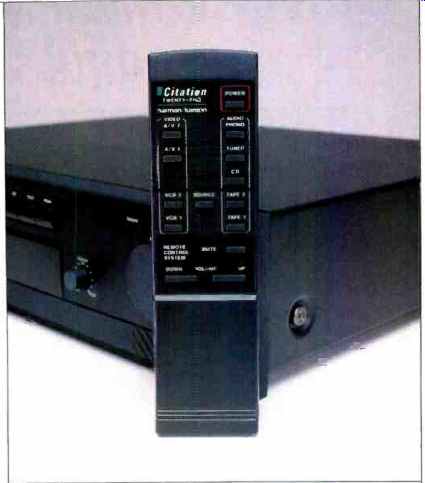
The Citation name has been associated for several decades with some of Harman/Kardon's most impressive audio components. While each generation of components introduces new circuit concepts and approaches to circuit design, some of the fundamental principles associated with the Citation line since its beginnings remain intact. Harman/ Kardon designers favor low gain, very wide open-loop bandwidth before feedback, and minimal use of negative feedback for lowering THD. Fast amplifier reaction time is another attribute of this and other Citation designs.
The Twenty-Five preamp incorporates a loudness control that I will have more to say about presently. The tone controls have two turnover points which can be selected by the user. The unit is extremely flexible; it not only accepts inputs from up to four video and three audio sources but also allows you to use each as a recording source. You can record almost any combination of video to video, audio to cassette deck, or audio to Hi-Fi VCR without having to change connections to your components. You can even dub from one source to several others while listening to a different program source.
Control Layout
Primary controls for the Citation Twenty-Five are always visible on the front panel, and secondary controls are hidden behind a flip-down panel. Primary controls include a power on/off switch with a built-in LED indicator, a standby indicator light, four tape-selector buttons plus a tape/source selector, five input-selector buttons, a small rotary balance control, a mute button, and a carefully calibrated master volume control. Flipping down the hinged panel that runs along the lower left of the front panel reveals the bass and treble controls and their turnover switches. Bass turnover can be set to either 200 or 400 Hz, while the available treble turnover frequencies are 2 or 6 kHz. Loudness compensation, subsonic and high-cut filters, mono/stereo, and an MM/ MC selector comprise a lower row of pushbuttons. Above these, another row of pushbuttons and five more buttons further to the right handle selection of the program source that you want to direct to the record outputs. The remote control supplied with the Twenty-Five duplicates all functions found on the unit's front, except for balance and those whose controls are under the concealed flip-down panel.
The rear panel sports no fewer than 37 input and output jacks, a ground terminal, five a.c. convenience receptacles (three switched and two unswitched), a "Remote Power On" jack (to turn on a Citation Twenty-Two power amp), and cartridge-loading switches for the MM and MC inputs. The switch for the MM inputs adds 300, 200, or 100 pF of capacitance to the 125 pF the preamp normally places in parallel with your cartridge. The MC inputs are equipped with an input-resistance selector (adjustable for 10, 30, 56, or 100 ohms) plus shorting plugs to minimize noise when these inputs are not in use.
Because so many components can be connected to and controlled by the Citation Twenty-Five, the authors of the owner's manual have taken pains to provide five easily understood hookup diagrams. Each diagram illustrates specific groups of components that might be used with this preamplifier.
Measurements
Because of Harman/Kardon's emphasis on wide bandwidth, I deliberately measured frequency response for the high-level inputs of the Citation Twenty-Five using the entire range of frequencies provided by my Audio Precision System One test gear. Results are shown in Fig. 1. Response was essentially flat from 10 Hz to 10 kHz, down 1 dB at 75 kHz, and down 3 dB at 135 kHz. Input sensitivity for the high-level inputs measured 66 mV for 0.5 V output.
To measure the action of the subsonic and high-cut filters, I ran a second sweep, this time from 10 Hz to 20 kHz.
Results are shown in Fig. 2. The -3 dB cutoff point for the subsonic filter occurred at precisely 15 Hz, as specified by the manufacturer, while the -3 dB point for the high-cut filter fell at 7 kHz. For reference purposes, a response curve with both filters turned off is also shown in Fig. 2. The range of the bass and treble controls, as well as the effect of the selectable turnover frequencies for each of these, is shown in the multiple sweeps of Fig. 3. As long as Harman/Kardon was offering selectable turnover frequencies for this preamp's tone controls, I would have preferred to see the bass turnover frequencies shifted to a somewhat lower point in the spectrum so they would have less influence on the critical midrange. On the other hand, the treble turnover points, ;n my opinion, are ideally set.
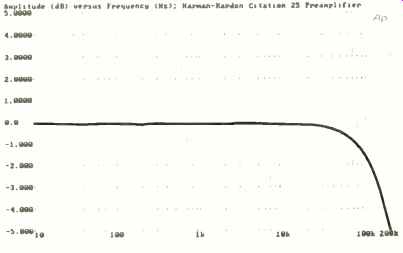
Fig. 1--Frequency response. Note that the frequency scale extends to 200
kHz.

Fig. 2--Frequency response with and without low-cut (subsonic) and high-cut
filters. Note scale changes from Fig. 1.
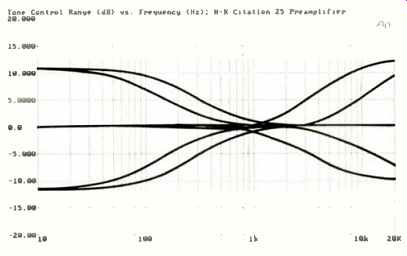
Fig. 3--Bass and treble control range, showing effects of switchable turnover
frequencies.
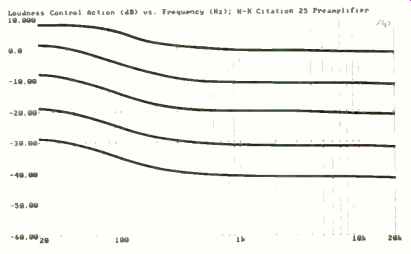
Fig. 4--Loudness compensation contours for volume settings from 0 dB (top
curve) to -40 dB (bottom curve); see text.
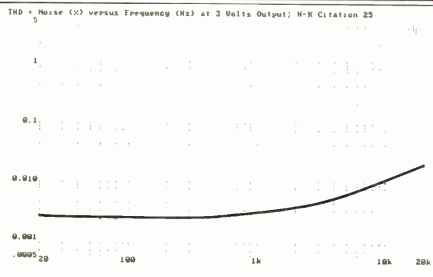
Fig. 5--THD + N vs. frequency, at 3.0 V output.
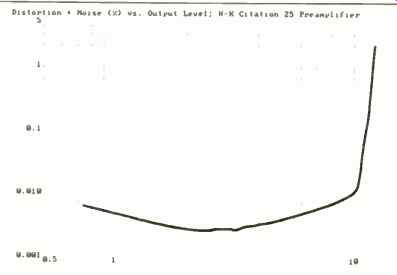
Fig. 6--THD + N vs. output voltage, at 1 kHz.
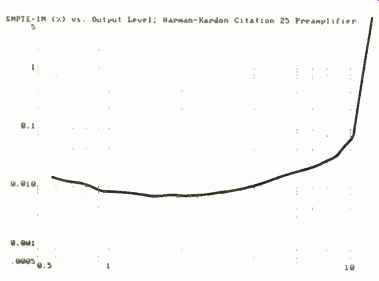
Fig. 7--SMPTE-IM distortion vs. output voltage.
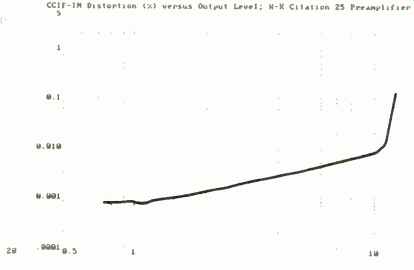
Fig. 8--CCIF-IM (twin-tone) distortion vs. output voltage.
This brings me to the measurement of the loudness control's contours. All I can do is applaud loudly. Harman/ Kardon realized that the Fletcher-Munson curves for equal loudness do not require treble emphasis at low listening levels.-he fact that those curves exhibit a rising characteristic at high frequencies does not mean that loudness controls must do likewise. It you were to examine the Fletcher-Munson curves, you'd see that the amount of rise at high frequencies is almost constant at all listening levels. This means that our hearing is less sensitive to high frequencies than to mid-frequencies, regardless of the level at which we listen. By contrast, our sensitivity to bass frequencies decreases as the listening level is lowered; that's why loudness controls make some sense in the first place. It's the change in sensitivity to bass frequencies with changing levels which makes us think that music reproduced at lower than performance levels is deficient in bass. Harman/Kardon understands this; very few other manufacturers do. So much for the good news. On the negative side, if you examine the curves shown in Fig. 4, you will notice that once the volume control is set at-10 dB or lower, the amount of bass boost remains virtually constant. This is not in accordance with the requirements of the Fletcher-Munson curves.
Less boost should have been provided at, say, -20 dB than at -40 dB. Overall, however, this loudness control sounded better to my ears--and to other listeners who auditioned this preamplifier--than the more usual design, which boosts both bass and treble frequencies at lower listening levels.
Figure 5 shows how THD + N varied with frequency for a fixed output level of 3 V. Distortion remained at around 0.0021% throughout the bass region, rising to 0.0028% at 1 kHz and to 0.02% at 20 kHz. Figure 6 shows how THD + N varied with increasing input and output levels for a 1-kHz test signal. The unit's THD + N remained under 0.01% up to about 10 V, the maximum output specified by Harman/ Kardon. Figures 7 and 8 show how SMPTE-IM and CCIF-IM (twin-tone) distortion varied with output level. In both instances, equivalent output exceeded 10 V before a steep rise in IM was noted.
The A-weighted S/N ratio for the high-level inputs, referred to 0.5 V input and 0.5 V output, measured an impressively high 91.62 dB for the left channel and 91.4 dB for the right-a fraction of a dB higher than claimed by Harman/ Kardon. Input sensitivity for the MM phono inputs was 1.1 mV for 0.5 V output, while S/N, referred to 0.5 V output with 5 mV applied, was a very high 84.5 dB. The MC inputs performed well, too, with a measured S/N ratio of 77 dB referred to 500 µV input and 0.5 V output. Input sensitivity for the MC inputs was 90 µV for 0.5 V output. Overload for the MM phono inputs was a very high 185 mV, while the MC inputs were able to handle 15 mV before there was audible evidence of input overload.
I was puzzled by one aspect of the phono inputs. Inasmuch as there is a front-panel switch that selects either MC or MM phono, why was it necessary to incorporate separate pairs of inputs for MM and MC cartridges on the unit's rear panel? Did the designers believe that, in this age of digital Compact Discs, audio enthusiasts owning the Citation Twenty-Five are likely to have two turntables, one with an MC pickup and the other with an MM cartridge? Oh, well, no harm in providing for that arrangement, I suppose. In any event, RIAA equalization was excellent, as evidenced by Fig. 9, which shows that deviation from perfect RIAA equalization did not exceed 0.2 dB at any point.
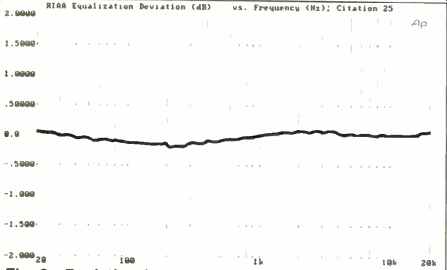
Fig. 9--Deviation from RIAA equalization is 0.2 dB or less at all frequencies.
Note expanded scale.
Use and Listening Tests
Rather than simply listen to a single program source through the Harman/Kardon Citation Twenty-Five, I decided to hook up as many audio sources as I could assemble. My objective was to determine just how simple (or complex) total control of all these components would be using this preamp. After only a few minutes of familiarization with the pushbutton selectors, I was able to accomplish all the interfacing and recording options described in the unit's owner's manual.
As for sound quality, I judged it primarily by listening to CDs--though out of sheer curiosity, I played back some Hi-Fi VCR audio recordings. I also connected an FM tuner and a couple of cassette decks to the preamp and did some listening, as well as some recording and dubbing using the switching capabilities of the Twenty-Five.
Using the better CD material, the sonic results were flawless. Listening to a recently acquired CD of Stravinsky's Petrouchka, as played by the Seattle Symphony Orchestra under the direction of Gerard Schwarz (Delos D/CD 3054), I attempted the ultimate A/B test for a preamplifier: Comparing the sound heard when feeding the CD player's output directly to my reference power amp and speakers against he sound heard with the Twenty-Five interposed between he CD player and the reference amp. With gain adjusted carefully to within 0.1 or 0.2 dB, I could detect no difference n sound quality between the two setups.
The same held true when I auditioned another new Delos release which features Carol Rosenberger playing a Schubert Sonata on a Bosendorfer Concert Grand piano (D/CD 3018). The recording engineer for both these Delos CDs, incidentally, was John Eargle, who has a way of making recorded music sound remarkably natural and lifelike. The Citation Twenty-Five neither diminished nor attempted to "enhance" that natural sound, which is what I would expect from a well-designed preamplifier.
--Leonard Feldman
(adapted from Audio magazine, Mar. 1989)
Also see:
Harman Kardon Citation 7.0 A/V Preamp/Processor (Apr. 1996)
Harman/Kardon Citation Twenty-Three Tuner (Jan. 1988)
Harman/Kardon HD800 Compact Disc Player (Jan. 1989)
Harman/Kardon Citation 16 Basic Amplifier (Dec. 1976)
First Sound Reference II Passive Preamp (Jan. 1992)
Electrocompaniet EC-1 Preamp (Nov. 1987)
= = = =